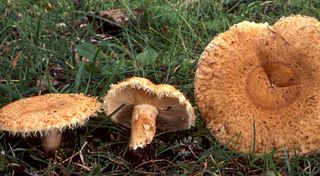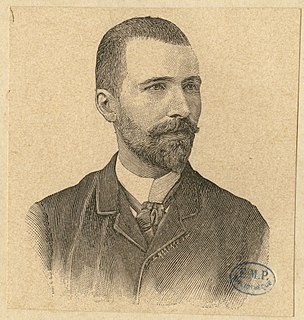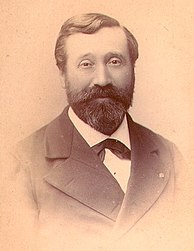Georges Jean Louis Malençon (3 November 1898, Paris – 31 July 1984, Valognes) was a French mycologist known for his investigations of fungi native to North Africa and the Iberian Peninsula.

Paris is the capital and most populous city of France, with an area of 105 square kilometres and an official estimated population of 2,140,526 residents as of 1 January 2019. Since the 17th century, Paris is one of Europe's major centres of finance, diplomacy, commerce, fashion, science, and the arts.

Valognes is a commune in the Manche department in Normandy in north-western France.

North Africa is a region encompassing the northern portion of the African continent. There is no singularly accepted scope for the region, and it is sometimes defined as stretching from the Atlantic shores of Morocco in the west, to Egypt's Suez Canal and the Red Sea in the east. Others have limited it to top North-Western countries like Algeria, Morocco, and Tunisia, a region that was known by the French during colonial times as "Afrique du Nord" and is known by all Arabs as the Maghreb. The most commonly accepted definition includes Algeria, Sudan, Morocco, Tunisia, Libya and Egypt, the 6 countries that shape the top North of the African continent. Meanwhile, "North Africa", particularly when used in the term North Africa and the Middle East, often refers only to the countries of the Maghreb and Libya. Egypt, being also part of the Middle East, is often considered separately, due to being both North African and Middle Eastern at the same time.
He studied mycology in Paris with Narcisse Théophile Patouillard and conducted research in Algiers with René Maire. From 1932 to 1950, he was head of the laboratory for plant pathology at the Institut Scientifique Chérifien, then director of the laboratory of cryptogamy at the Institut scientifique Chérifien de Rabat until 1969. [1]

Narcisse Théophile Patouillard was a French pharmacist and mycologist.
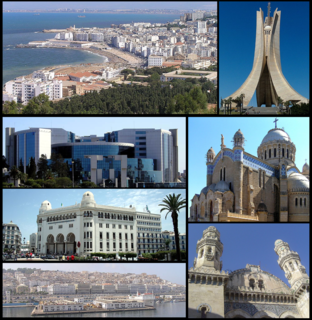
Algiers is the capital and largest city of Algeria. In 2011, the city's population was estimated to be around 3,500,000. An estimate puts the population of the larger metropolitan city to be around 5,000,000. Algiers is located on the Mediterranean Sea and in the north-central portion of Algeria.

René Charles Joseph Ernest Maire was a French botanist and mycologist. His major work was the Flore de l'Afrique du Nord in 16 volumes published posthumously in 1953. He collected plants from Algeria, Morocco, France, and Mali for the herbarium of the National Botanic Garden of Belgium.
He was a member of the Société botanique de France (from 1919) and the Société linnéenne de Lyon (from 1928). His herbarium (6000 panels) is housed in the herbarium at the University of Montpellier. [1]
The Société botanique de France (SBF) is a French learned society founded on 24 May 1854. At its inaugural meeting it stated its purpose as "to contribute to the progress of botany and related sciences and to facilitate, by all means at its disposal, the education and the work of its members".
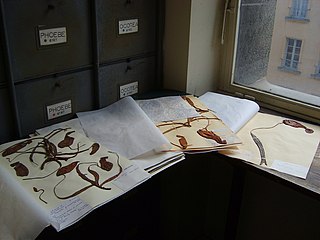
A herbarium is a collection of preserved plant specimens and associated data used for scientific study..
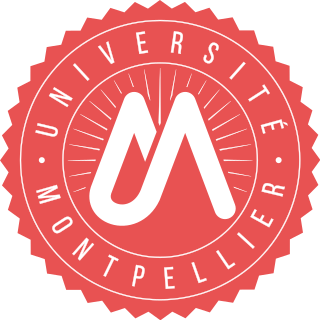
The University of Montpellier is a French public research university in Montpellier in south-east of France. Established in 1289, the University of Montpellier is one of the oldest universities in the world.


